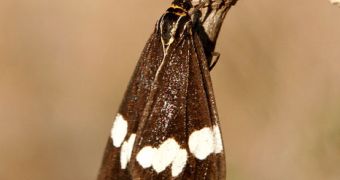In a slightly different version of Pavlov's experiment, scientists attempted to recreate the same conditioned response in moths, using sugared water as food. They placed small sensors in the insect's brain and measured the impulses that were triggered when certain scents were released. Thus, they were able to map exactly what made the moth believe that after a certain smell was present, a reward would appear. This discovery could lead to a better understanding of the learning process in both insects and humans.
By working together, scientists at the National Institute of Health (NIH), the Chinese University of Hong Kong and the National Institute of Standards and Technology (NIST) were able to determine that the most important brain wave fluctuations occur when the scent appears, then they continue steadily while the smell is present and then spikes again when the stimuli are gone. This behavioral pattern is similar to that of humans who take notice of something, become aware of its presence and then notice when the object is gone.
Being able to determine exactly how associations are formed inside the brain has been a long-term endeavor by the scientific community and this experiment is a small, but essential step in understanding exactly how people learn stuff. The meaning forms inside the brain when certain mental depictions of objects are related to each other, as was the case with Pavlov's dog, and, more recently, the moth used in the experiment.
The biggest stake of this collaboration is for researchers to someday be able to create an artificial nose of sorts, in that a powerful sensor array, capable of detecting odors, could become widely available. This array could have numerous applications, especially in detecting bio-threats, if placed in appropriate positions in strategic points. Tough the technology is not yet available, several governments already expressed interest in the research, only further proving that bio-mechanics is the future of technology as we know it.

 14 DAY TRIAL //
14 DAY TRIAL //